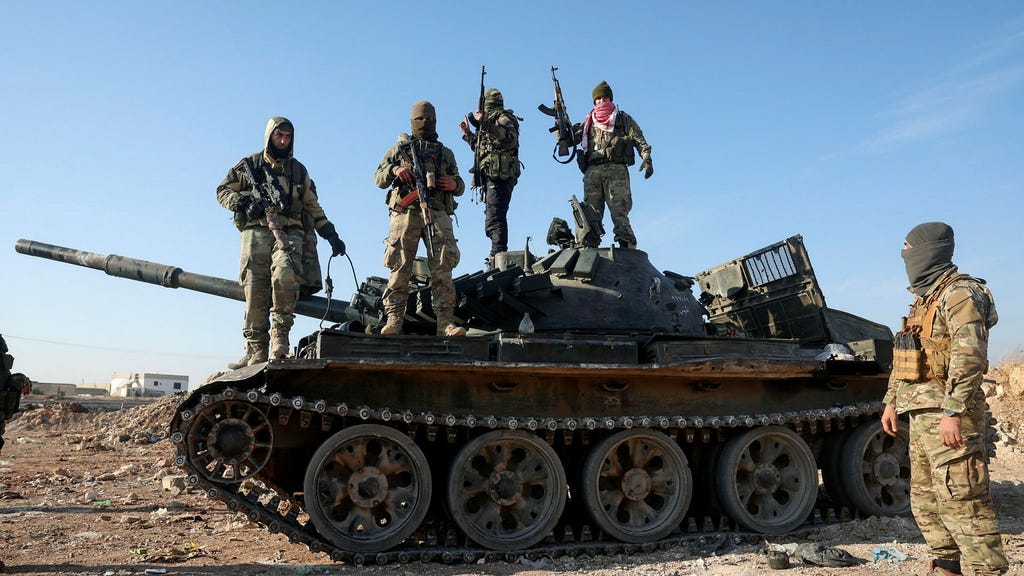The escalating conflict in northwestern Syria has claimed the lives of over 700 people, including 110 civilians caught in the crossfire. The Syrian Observatory for Human Rights (SOHR), a UK-based monitoring group, reports these figures based on a network of sources within Syria. The breakdown of casualties includes at least 360 rebel fighters and 230 government soldiers. This recent surge in violence has seen Islamist groups, spearheaded by the extremist organization Hayat Tahrir al-Sham (HTS), seize control of the strategically important city of Aleppo and continue their southward advance. This offensive has triggered a massive displacement of approximately 115,000 people in Idlib and northern Aleppo, seeking refuge from the intensified fighting, as reported by the UN.
The Syrian government forces, loyal to President Bashar al-Assad, have launched a counter-offensive, pushing back against the rebel advances with renewed vigor. They have reportedly regained control of two villages, signaling a shift in momentum. President Assad has also authorized a 50% salary increase for professional soldiers, as per a decree issued and publicized by SOHR. This move aims to bolster morale and strengthen the government’s military capabilities, though the pay raise excludes reservists and veterans. The Syrian military, supported by extensive airstrikes, is reportedly holding back rebel forces approximately one mile from the city of Hama, a crucial location in the ongoing conflict. Amidst this intense fighting, award-winning Syrian photojournalist Anas Alkharboutli, working for the German news agency DPA, was tragically killed in an airstrike near Hama. His death underscores the dangers faced by journalists documenting the Syrian conflict.
The Syrian civil war, ignited by the Arab Spring uprisings in 2011, has devastated large swathes of the country and continues to claim lives. Despite the widespread destruction and loss of life, President Assad remains in power, largely due to the backing of key allies: Russia, Iran, and Iranian-backed Shia militias in the region. These alliances have provided crucial military and political support, enabling the Assad regime to withstand years of conflict. Turkey, another regional player, has for years supported certain opposition groups in northwestern Syria, further complicating the dynamics of the conflict. This external involvement has fueled the protracted nature of the war, adding layers of complexity to an already volatile situation.
The recent escalation of violence has prompted increased diplomatic engagement, with Russia, Iran, and Turkey reportedly in close contact to address the deteriorating security situation. The involvement of these three countries highlights their significant influence in shaping the trajectory of the Syrian conflict. Their discussions underscore the urgency of finding a resolution to the ongoing violence and mitigating the humanitarian crisis. The interplay of these external actors will likely play a crucial role in determining the future of Syria and the stability of the region.
The ongoing fighting between hardened jihadist fighters and often inexperienced, conscripted soldiers in Assad’s army further complicates the situation. The mismatch in experience and motivation between the opposing forces creates a volatile and unpredictable battlefield. The presence of extremist groups like HTS adds another layer of complexity, raising concerns about the potential for further radicalization and the spread of extremist ideologies. The humanitarian cost of the conflict continues to mount, with hundreds of thousands of civilians displaced and seeking refuge from the violence.
The enduring conflict in Syria exemplifies the devastating consequences of protracted civil war, fueled by internal divisions and exacerbated by external interventions. The human toll is immense, with countless lives lost and millions displaced. The destruction of infrastructure and the disruption of essential services have created a humanitarian crisis of immense proportions. The international community faces the daunting challenge of finding a lasting solution that addresses the root causes of the conflict, protects civilians, and paves the way for a peaceful and stable future for Syria. The complex web of alliances and rivalries, coupled with the presence of extremist groups, makes finding a resolution an exceptionally difficult task.














